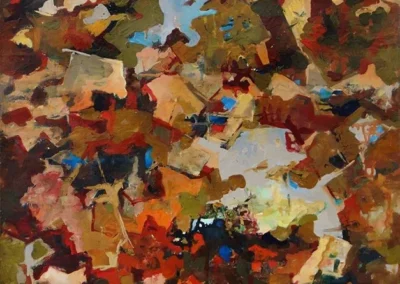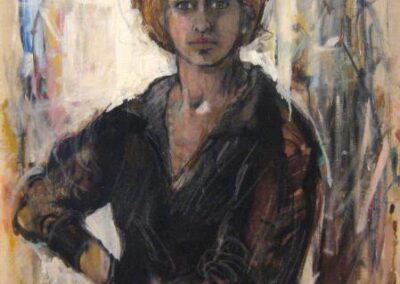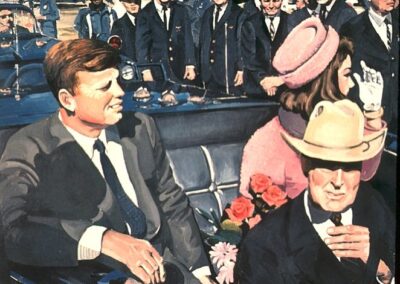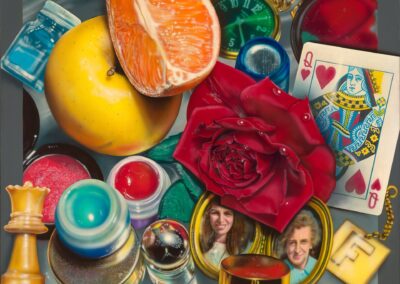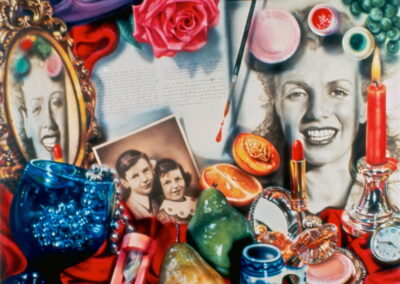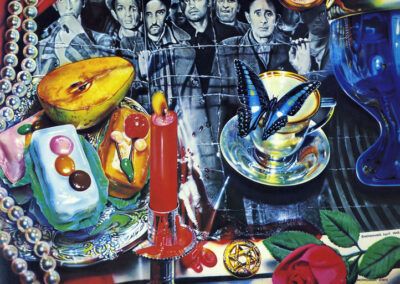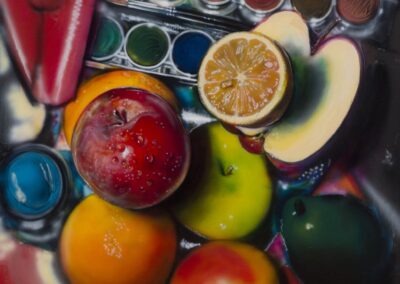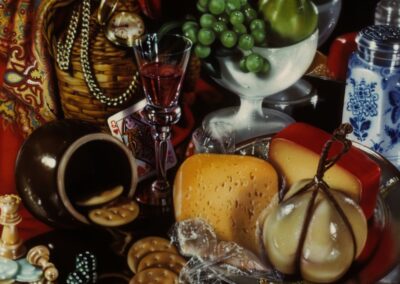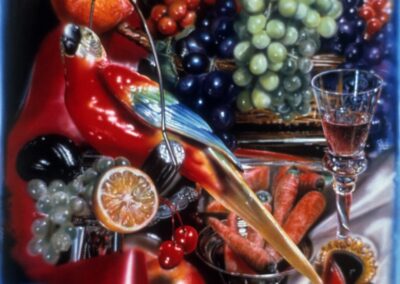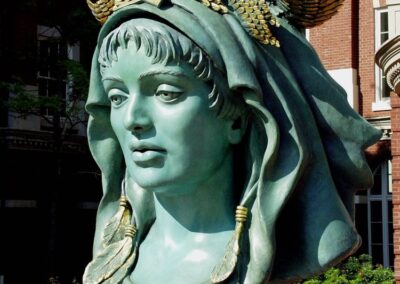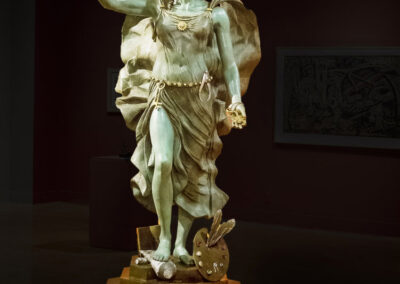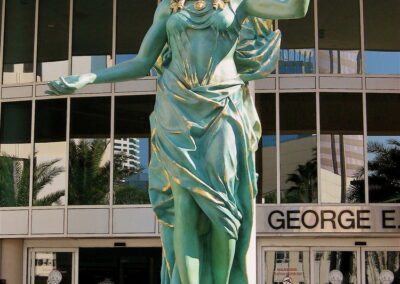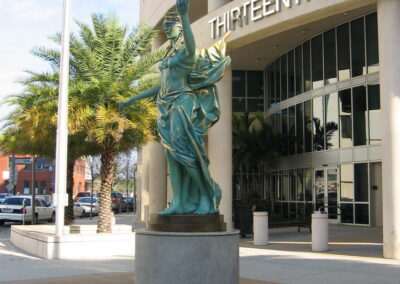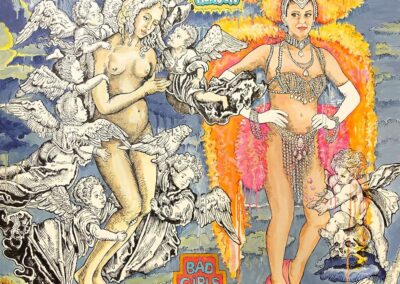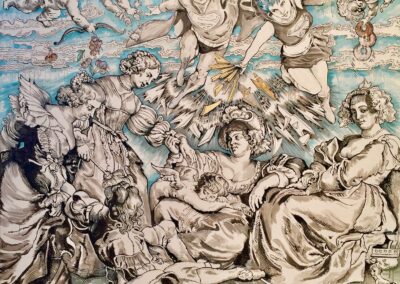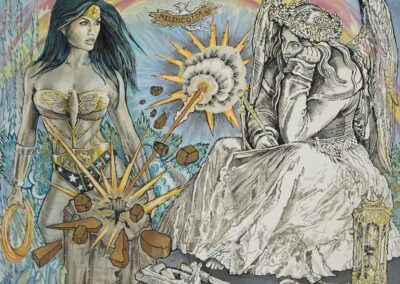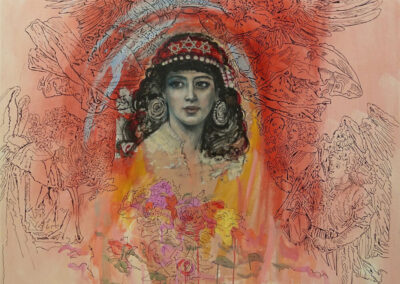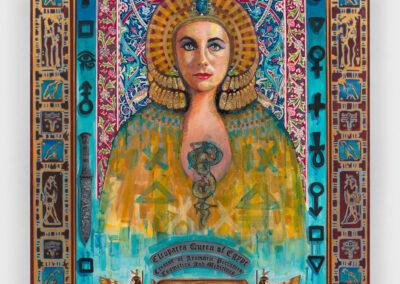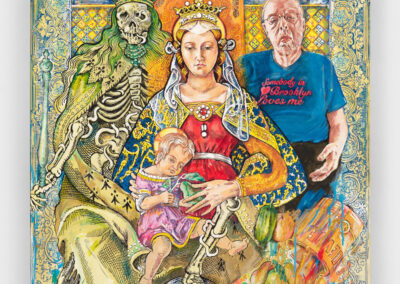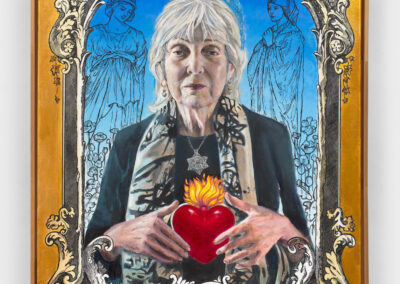Our next Artist You Need To Know is Audrey Flack (1931 – 2024).
Flack was an American artist best known for her outstanding work focused upon Photorealism after some early forays in abstract expressionism and many public artworks that are both monumental and update art historical tropes and ideas. She worked in painting, printmaking, sculpture, and photography.
From Hollis Taggart Gallery : “Though best known today for her stunning Photorealist paintings, Audrey Flack first came to artistic maturity among the vibrant downtown scene of Abstract Expressionism. Flack was a regular at the 8th Street Club and at the legendary Cedar Tavern, where she was immersed in the cultural and social atmosphere of the period and developed ties with art world luminaries such as Willem de Kooning, Jackson Pollock, and Franz Kline. Through Abstract Expressionism, Flack found her artistic identity and ultimately created highly original work that was ordered yet gestural and captured the core sensibility of the age.”
“Art is a continuous discovery of reality, an exploration of visual data which has been going on for centuries, each artist contributing to the next generation’s advancement.”
Audrey Flack was born in New York City : her parents were Polish immigrants. Growing up, she was a student at New York’s High School of Music & Art : later she would attend Cooper Union (in NYC) but would switch to Yale College in 1952 (while there she studied under the renowned colour theorist and artist Josef Albers). Flack earned a number of degrees, including a graduate degree and an honorary doctorate from Cooper Union as well as a Bachelor of Fine Arts from Yale University. At the Institute of Fine Arts, New York University, Flack also studied art history which would always be a factor in her creative processes, in a manner both appreciative and critical.
Though Flack’s massive photorealist works are the best known of her diverse and prolific practice, she has shifted her aesthetic and focus throughout her career. As cited here : “Flack’s art is intensely personal, and the artist expresses herself through her work across all styles and media. The personal becomes more overt in a series of expressionist portraits completed in the 1950s. Flack turned her artistic eye both on herself and to her family, creating a compelling group of portraits and self-portraits that offer a glimpse into the personal psychology of the artist. In the 1970s Flack began painting still lifes and images from news media in a hyper-realistic style and would become a pioneering photorealist painter. Her decadent compositions of Baroque excess fill the visual field with photorealistic depictions of modern still life elements, alluding to her sustained interest in the work of Tintoretto, Rembrandt, Rubens, and other Old Masters. These works were championed by influential critic Lawrence Alloway, who credited Flack with the reinvention of the still life.”
Beginning in the early 1980s, Flack began to focus more on sculpture, often of a monumental nature and an area in which she was primarily self taught. These artworks pull upon her art historical knowledge and take inspiration from the ‘heroic’ figures of the Greco-Roman, Renaissance, and Baroque eras : “Flack’s subjects are often powerful females and through this work Flack explores the sources and variations of feminine essence and power, from goddesses such as Islandia and American Athena or queens such as Queen Catherine, for whom the New York borough of Queens is named.” (from here)
In speaking of this change in her artistic output, Flack offered that “our society is fragmented, empty, and falling apart. I wanted to make solid objects, things that people could hold on to.”
In 1991 Flack published a book titled Art and Soul : Notes on Creating. This collection of writings and meditations spanned from Flack’s thoughts on the creative process to commentaries on artists that have been important to her own process while offering guidance and a considered – if sometimes critical – summation of the contemporary art world that Flack navigated.
She subsequently was a guest lecturer at the Pratt Institute, New York University’s School of Visual Arts, and at Cooper Union. She was awarded the Saint Gaudens Medal (1982) by Cooper Union.
“Art is a powerful force in the world. It is the visual representation of what we think and what we feel, and of how we think and how we feel.”
Flack returned to working in the two dimensional sphere until her passing. She also held the position of honorary professor at George Washington University as well as a visiting professor at the University of Pennsylvania.
“What makes for great art is the courage to speak and paint and write what you know and care about.”
Her work can be found in a number of significant museums and collections, including the Museum of Modern Art, the Metropolitan Museum of Art, Smithsonian American Art Museum, the Albright-Knox Art Gallery, Dallas Museum of Art, Los Angeles County Museum of Art, the Whitney Museum of American Art, and the Solomon R. Guggenheim Museum. Flack was an Honorary Vice President of the National Association of Women Artists. Flack has also completed numerous public commissions in terms of sculpture and installation. A more detailed listing of her accomplishments can be seen here.
A documentary about her life and work titled Queen of Hearts: Audrey Flack was produced In 2020.
Audrey Flack passed away at the age of 93 in Southampton, New York, in June of 2024. An obituary that notes many of the high points and controversies (whether as a feminist or as someone who bucked art trends with skill and style) of her seven decade career can be read here.
Not long before her death, she published a memoir With Darkness Came Stars : it “tells the story of her struggles—and those of other women of her generation and those a bit ahead of hers—making her way through an art world heavily dominated by male artists, dealers and museum officials.” (from a remembrance of Flack at The Observer).
Much more of her work can be seen at her site here. Several other gallery spaces online have great images of her work as well as more engaging biographical information and those can be seen here and here.




